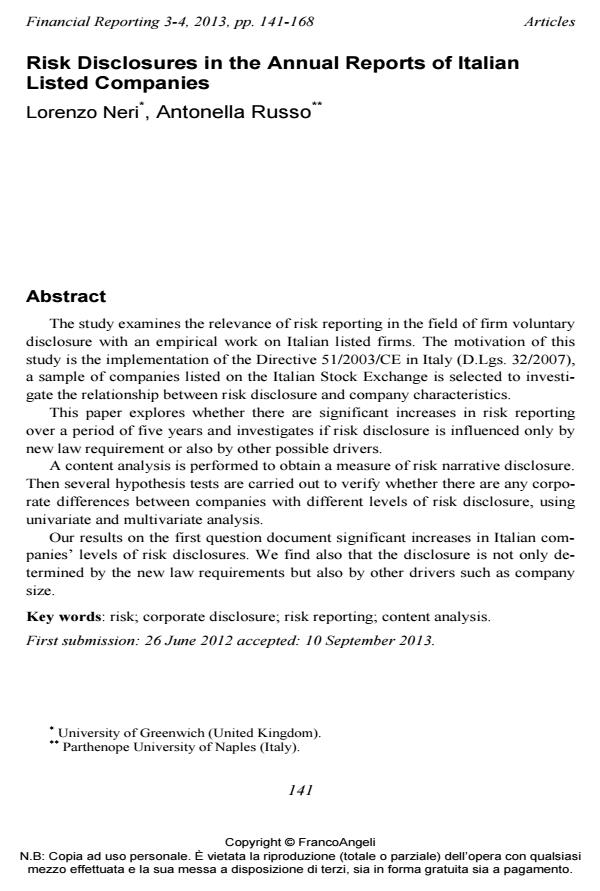Risk Disclosures in the Annual Reports of Italian Listed Companies
Journal title FINANCIAL REPORTING
Author/s Lorenzo Neri, Antonella Russo
Publishing Year 2014 Issue 2013/3-4
Language English Pages 28 P. 141-168 File size 284 KB
DOI 10.3280/FR2013-003007
DOI is like a bar code for intellectual property: to have more infomation
click here
Below, you can see the article first page
If you want to buy this article in PDF format, you can do it, following the instructions to buy download credits

FrancoAngeli is member of Publishers International Linking Association, Inc (PILA), a not-for-profit association which run the CrossRef service enabling links to and from online scholarly content.
The study examines the relevance of risk reporting in the field of firm voluntary disclosure with an empirical work on Italian listed firms. The motivation of this study is the implementation of the Directive 51/2003/CE in Italy (D.Lgs. 32/2007), a sample of companies listed on the Italian Stock Exchange is selected to investigate the relationship between risk disclosure and company characteristics. This paper explores whether there are significant increases in risk reporting over a period of five years and investigates if risk disclosure is influenced only by new law requirement or also by other possible drivers. A content analysis is performed to obtain a measure of risk narrative disclosure. Then several hypothesis tests are carried out to verify whether there are any corporate differences between companies with different levels of risk disclosure, using univariate and multivariate analysis. Our results on the first question document significant increases in Italian companies’ levels of risk disclosures. We find also that the disclosure is not only determined by the new law requirements but also by other drivers such as company size.
Keywords: Risk; corporate disclosure; risk reporting; content analysis. First submission: 26 June 2012 accepted: 10 September 2013.
Lorenzo Neri, Antonella Russo, Risk Disclosures in the Annual Reports of Italian Listed Companies in "FINANCIAL REPORTING" 3-4/2013, pp 141-168, DOI: 10.3280/FR2013-003007